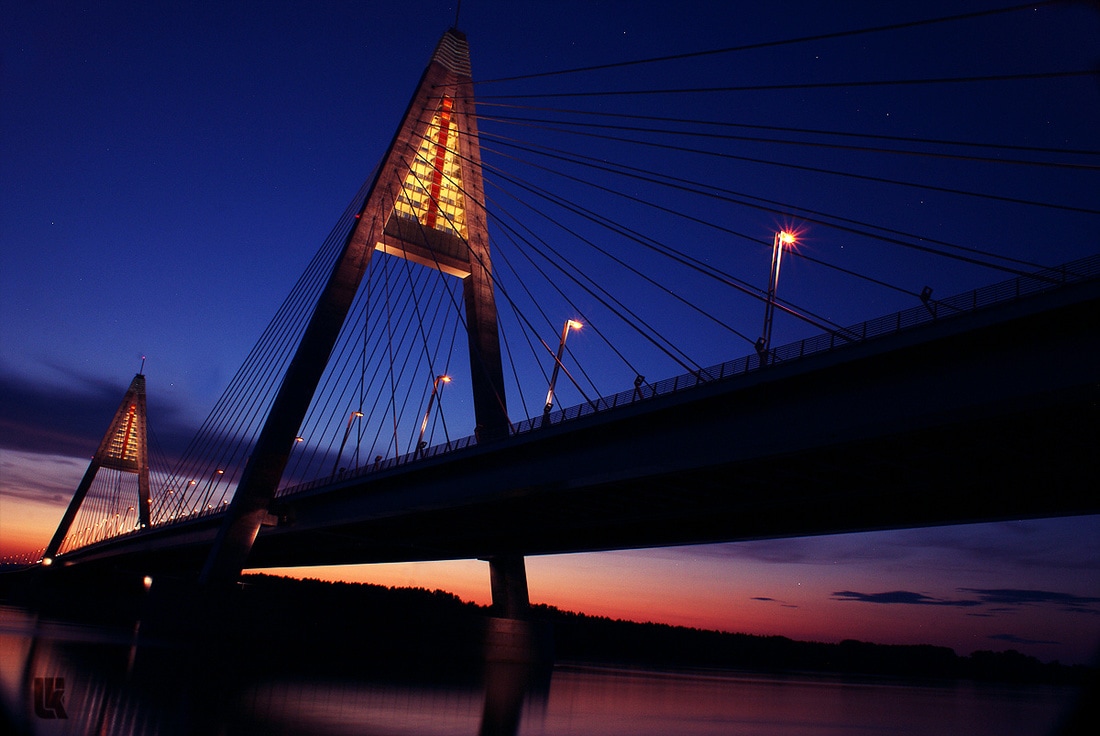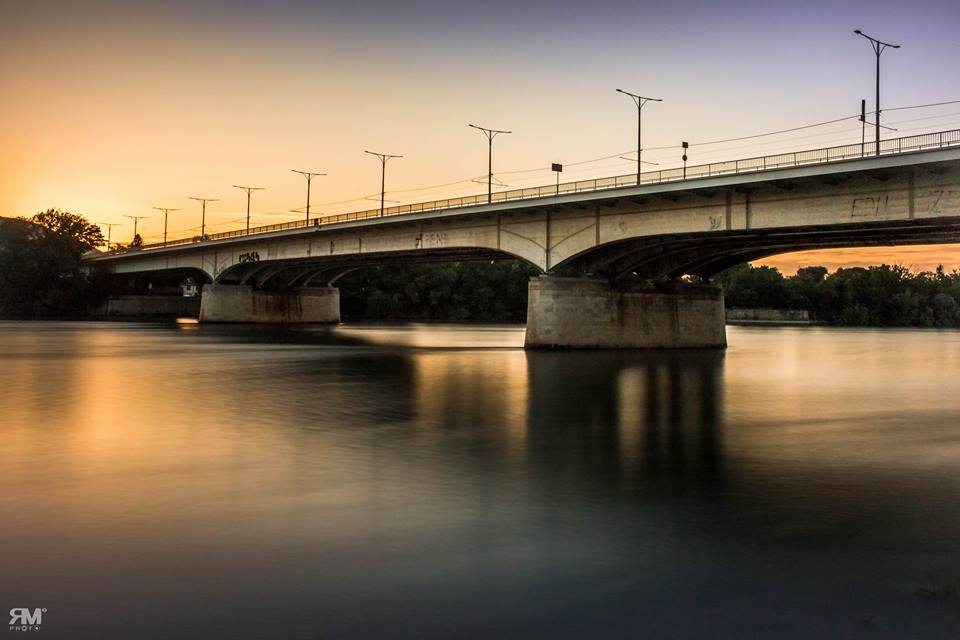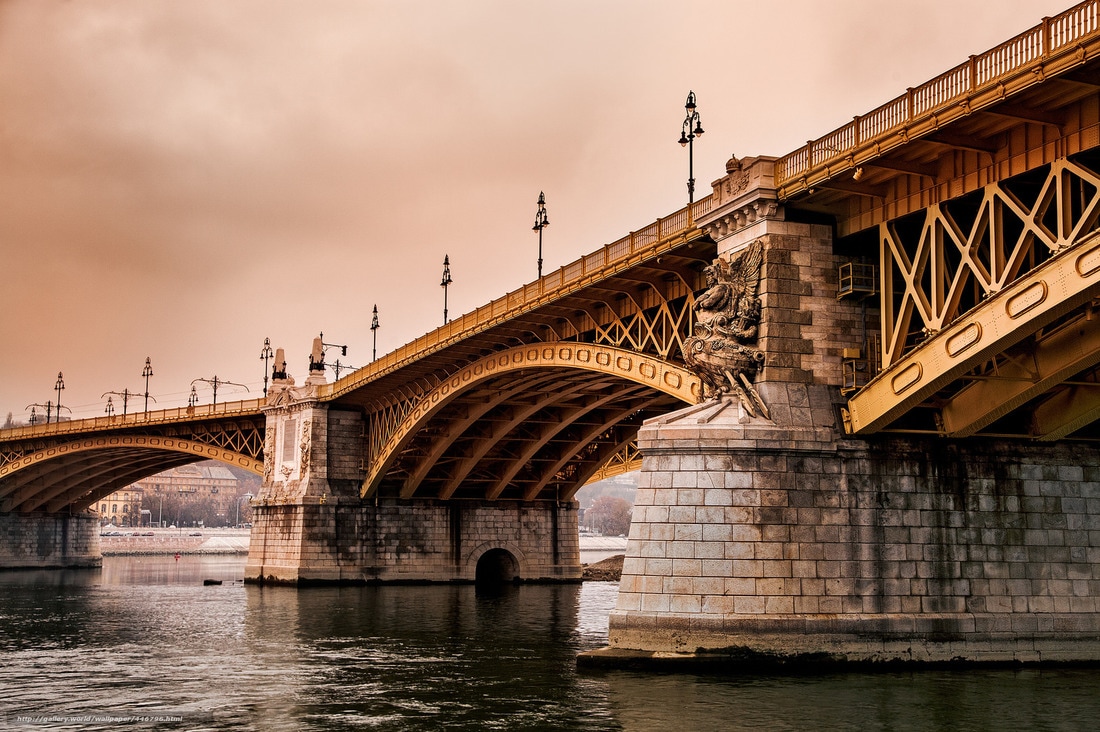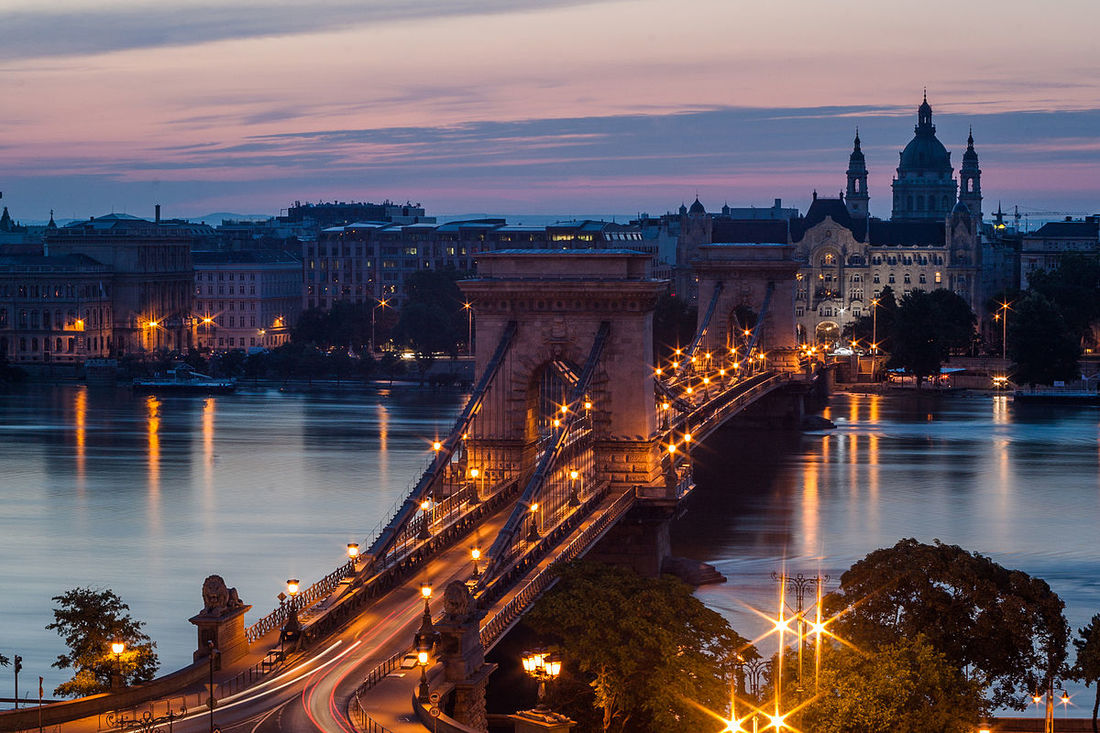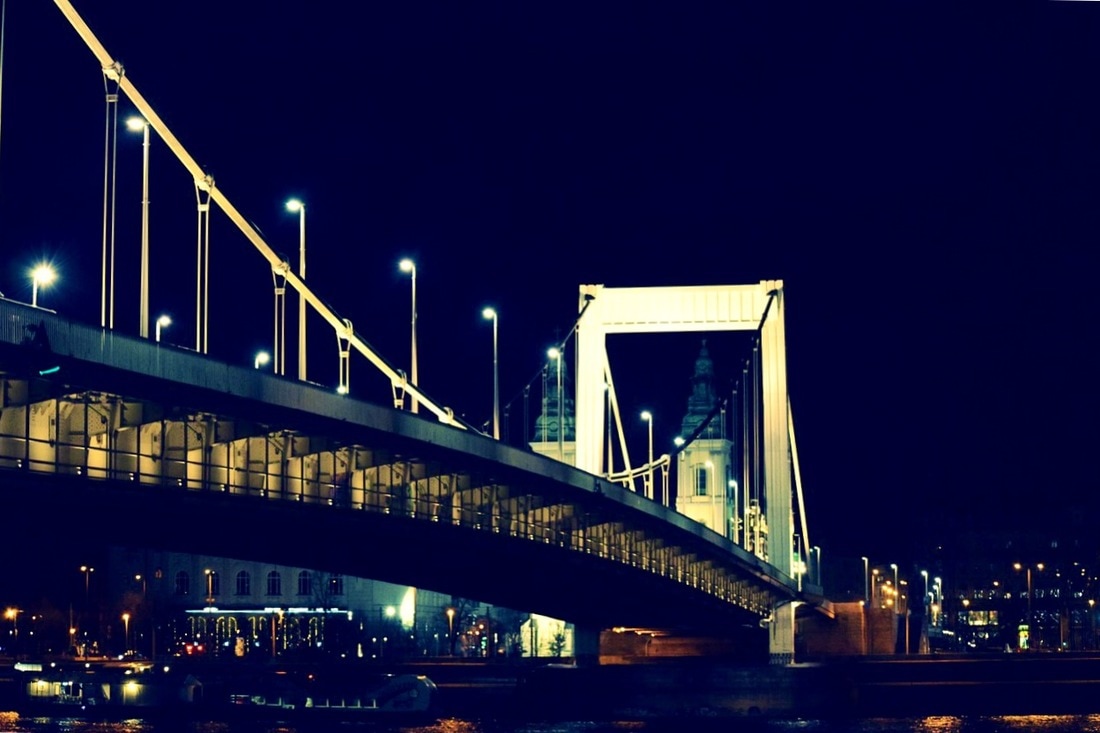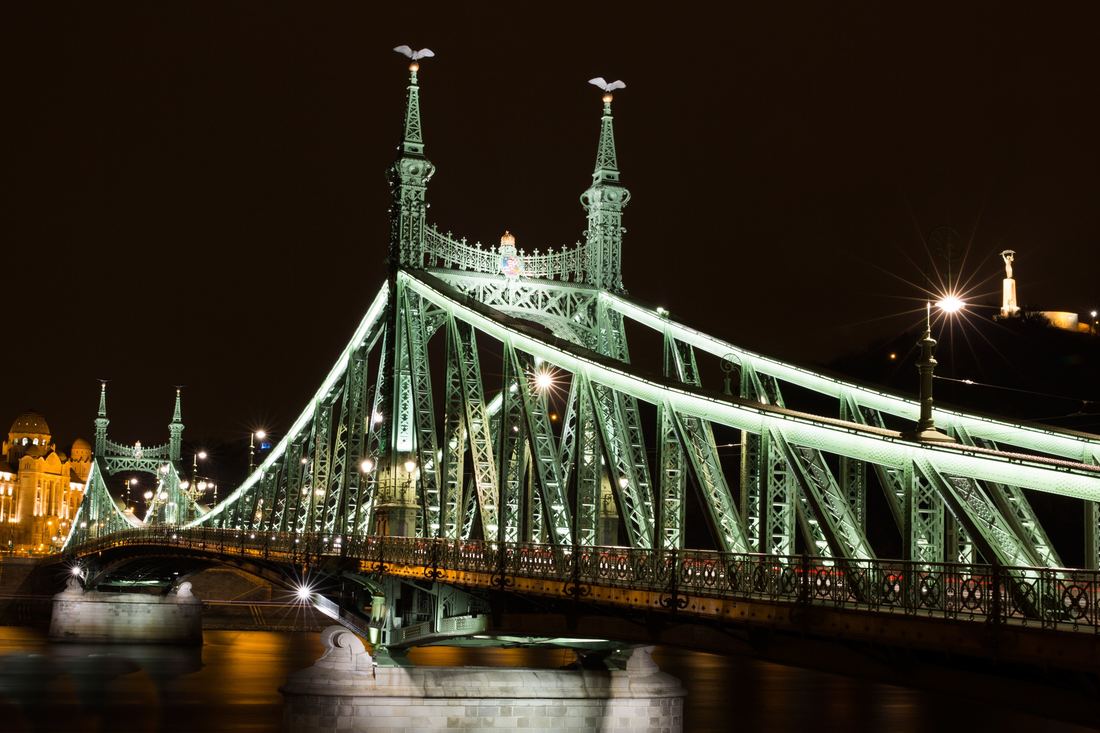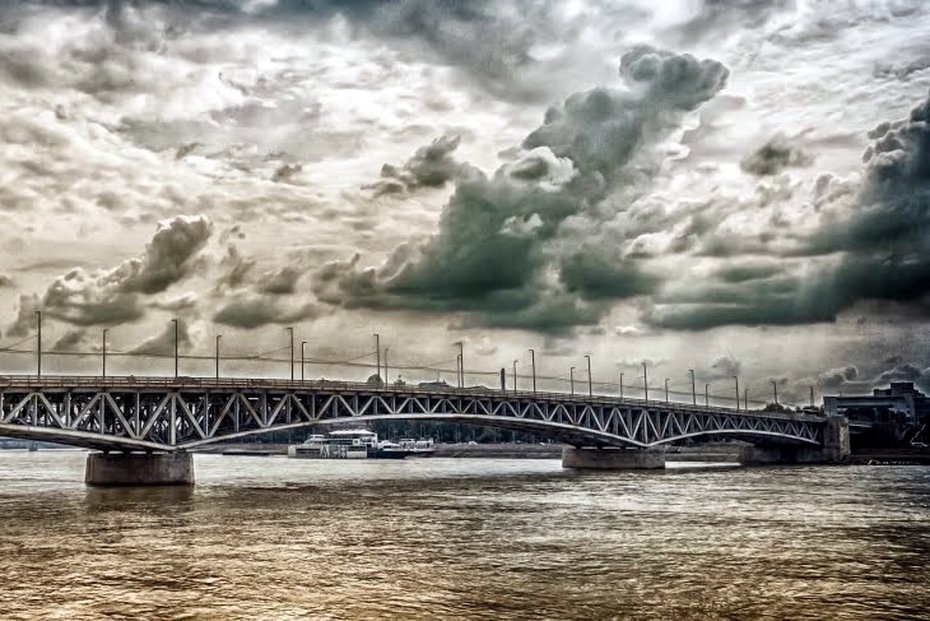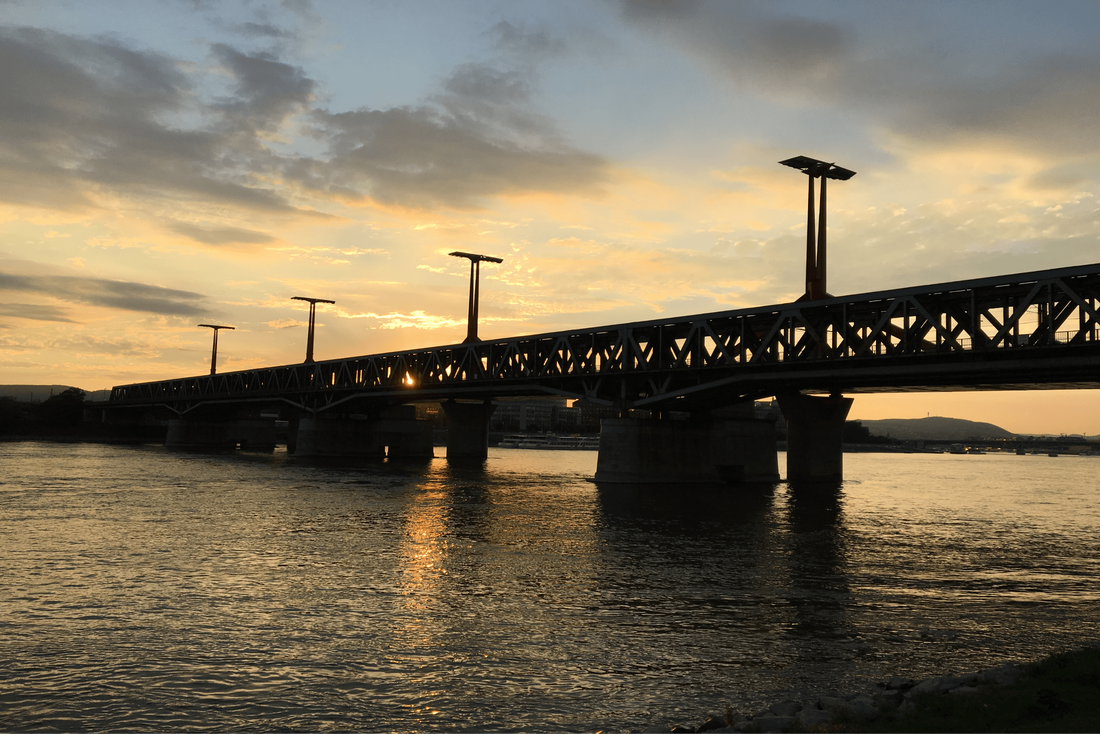|
2/4/2017
Bridges of BudapestChain Bridge and its Lions by Lucas Aresin We might have mentioned this before – and if you are a resident of Budapest you surely know this – but Budapest was not always one city. In fact, until 1873, there were two cities: hilly Buda to the west of the Danube and flat Pest to the east. It took a surprisingly long time until the first bridge was built. Today, you can cross from one part of the city to another via multiple overpasses, and if you stick around, we will introduce you to the bridges of Budapest and what you can do once you are there. Megyeri Bridge Random fact: Stephen Colbert actually thought this bridge could be named after him! Basically, ou could vote about the name of the bridge online so he asked his viewers to help him. He was followed by Jon Stewart and 16th century Hungarian hero Miklós Zrínyi whom he called an "asshole".. but when the then Hungarian ambassador to the US filled him in about the requirements he couldn't compete anymore: you had to speak Hungarian fluently and be dead.. Constructed between 2006-2008 its 1.862 meters make this cable-stayed bridge the longest of the city. Two gigantic pylons form the letter "A" - one of them even hides an elevator for the maintenance workers and at the peak there are LED lights instead of the traditional ones. Árpad Bridge The northern-most bridge of Budapest was constructed between 1939 and 1950. It's quite easy to guess what took them so long – World War II. When it was finally done, it was named after Joseph Stalin, but later renamed to Árpad Bridge – as planned – in 1958. The bridge is touching upon Margaret Island and Óbuda Island (this is where Sziget festival happens) and is 928 meters long. It stands on concrete pontoons and looks quite flat – simple, but effective. Apart from Óbuda Island, the bridge connects you to Flórián Park on the Buda side. Margaret Bridge This 607m long bridge touches the southern end of Margaret Island since 1900 (and is therefore aptly named). It's quite different in style, with Neo-baroque arches and statues on the pillars, and a much thinner, leaner design. It was based on French construction plans. Construction of the bridge started in 1872 and was opened to traffic in 1876. During World War II, the pillars of the bridge were blown up by retreating German forces. The bridge was then rebuilt in 1948. On Margaret island you can visit a small zoo, the Japanese garden, an open-air stage, rent a 4-wheeler bike cart or party at Raktár beach. From the Pest side you can take tram nr 2 and go till the Parliament building. From the Buda side you can hop on the suburban railway and go to Óbuda or the Sziget festival every August! Chain Bridge This 380 m long, liget-embellished bridge is definitely an eye-opener. It was the first permanent stone bridge that served as a link between the two cities which was a symbolical thing: the two parts would soon unite. Lánchíd gets its name from the iron chains that are held up by stone piers. At night, thousands of light bulbs illuminate the bridge's framework, reflecting beautifully off the dark waters below while the stone lions watch your step at each end ofthe bridge. Allegedly these cuties don't have tongues and the sculpture jumped into the Danube in shame and was never seen alive again. Based on the plans of English engineer William Tierney Clark and supervised by Scottish Adam Clark, construction of the Chain bridge began in 1839 and ended in 1849. The Marlow bridge in England looks very similar to this - it has the same engineer. It was rebuilt twice after that since it was also blown up in World War II. 'Burning your bridges' became more than just a figure of speech. Each end of the bridge connects you with the must-see sights of Budapest. From the Buda side for example, you can climb Castle Hill and easily reach the Royal Palace that hosts the National Gallery and the History Museum. The Pest side boasts the Gresham Palace (the Four Seasons Hotel), the Academy of Sciences, the oldest tree of BP, and the St. Stephen's Basilica – a good place to climb are its towers if you're out for a great panorama picture. Elisabeth Bridge Queen Elisabeth "Sisi", the spouse of Francis Joseph I, gave her name to this 380m long bridge, which was at the time of its construction the world's longest suspension bridge. It was built between 1897 and 1903, however, as always, it was blown up in World War II. Afterward, it had to be rebuilt, which was done between 1960 and 1964. The design of the bridge changed slightly, and although it copied the framework of the original, it was now a more modern, leaner version. On the Buda side, this bridge helps you ascend Gellért hill (for the best view you want to go towards the Liberty statue by the Citadel), and on the Pest side, it brings you close to Budapest's shopping street, Váci utca as well as the oldest church of Pest: The Inner City Parish church. Notice how the bridge takes a little turn by the church? That's not a coincidence - this way it could stay where it was. On March 15th square you'll find Kiosk, an urban-chic restaurant with an outdoor seating. Liberty Bridge Liberty Bridge was built for the Millenium World Exhibition in 1896 and was originally named Francis Joseph Bridge, making it the "groom" bridge of Elisabeth Bridge. Franz Joseph was the one who symbolically hit the last nails that had his initials but they were stolen ever since. After the end of World War II, it was renamed to Liberty Bridge. Only 333 m, this is the shortest of the bridges, and thus quite comfortable to cross on foot. It was closed down for an entire month in 2016 and people held yoga classes, salsa nights and picniques accompanied by soothing guitar sounds. Some went so far as to make a selfie with the turul birds on top! In summer it's a popular BYOB spot. Although a bit uncomfortable, the views make up for that! On the Buda side you can refresh yourself at the Gellért thermal baths, in the summer season you could have a drink at the old childrens' pools, now a bar named Pagony or visit the Cave church. At the Pest side, you can get some souvenirs at the Great Market Hall or head to Bálna mall (the glass construction that looks like a whale) that hosts an exhibition space and many cool bars along the river. Petőfi Bridge Named after poet and revolutionist Petőfi, this 378m long bridge is a flat, simple one, lacking the more intricate and postcard-worthy designs of the central bridges. Construction began in 1933 and was finalized in 1937, but who would have thought, it was destroyed in World War II and subsequently rebuilt to its current state in 1952. As you might have guessed, functionality before beauty was the motto in this case. Crossing the bridge towards Buda will bring you to A38 party boat, a former Ukranian stone carrier ship which hosts several concerts and parties throughout the year and was voted the best bar in the world by Lonely Planet a few years ago as well as to the Technical University. On the Pest side under the bridge there is a small skate park and going north you'll come across a park along the river but you can also hop on the suburban railway here and go further south and do something unusual like going underground on a tour in a WW2 shelter. Rákóczi Bridge
The southern-most 494m long bridge of Budapest is also the youngest. It looks quite urban-cool and much less classical. Built in 1995, the bridge is not held up by chains and piers, however, strange red pillars still rise from the bridge as if they were holding something. They in fact do exist as unique lighting systems, which spread light evenly across the roads. Still commonly called Lágymányosi bridge, on its Pest side, you can find two pieces of modern architecture: the Palace of the Arts (that hosts the Ludwig Museum) and the new National Theatre with a super-cool ship design. Nearby lies the biggest open air club, Budapest Park. The Buda side awaits you with the still calm Kopaszi dam where you can unwind by the shore and see some nice street art on the pillar of the bridge. |
CategoriesAll Bars Baths And Pools Beach Bars Best Areas To Stay Bridges Budapest Info Cemetery District 8 Escape Games Fall Festivals Food Historical Sights Hungarian Inventions Indoor Activities Movies And Music Videos Museums Outdoor Activities Outdoor Bars Photo Locations Rainy Day Restaurants Rooftop Bars Ruin Bars Statues Street Art Urban Legends Valentine's Day AuthorB Side Tours |
